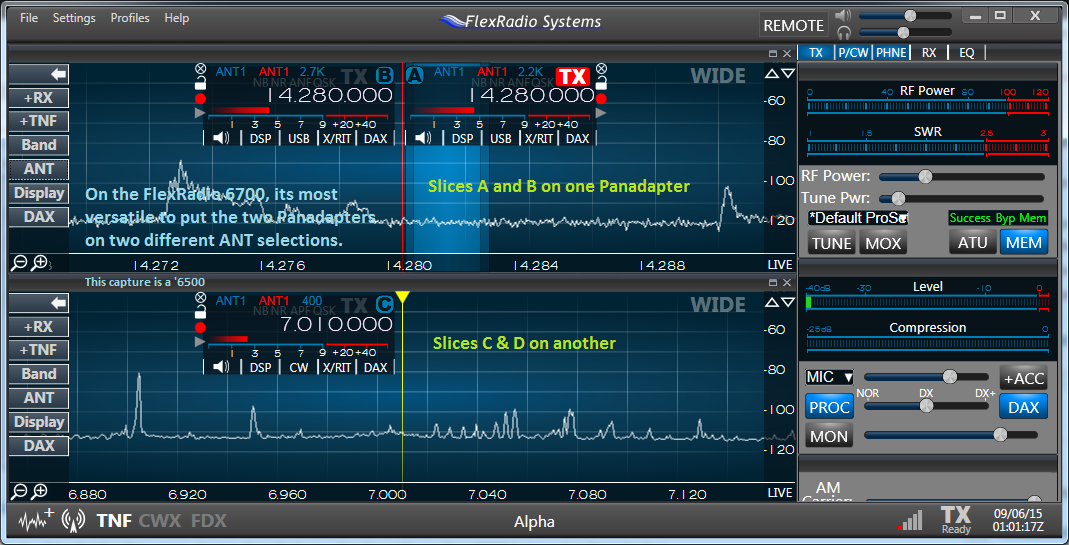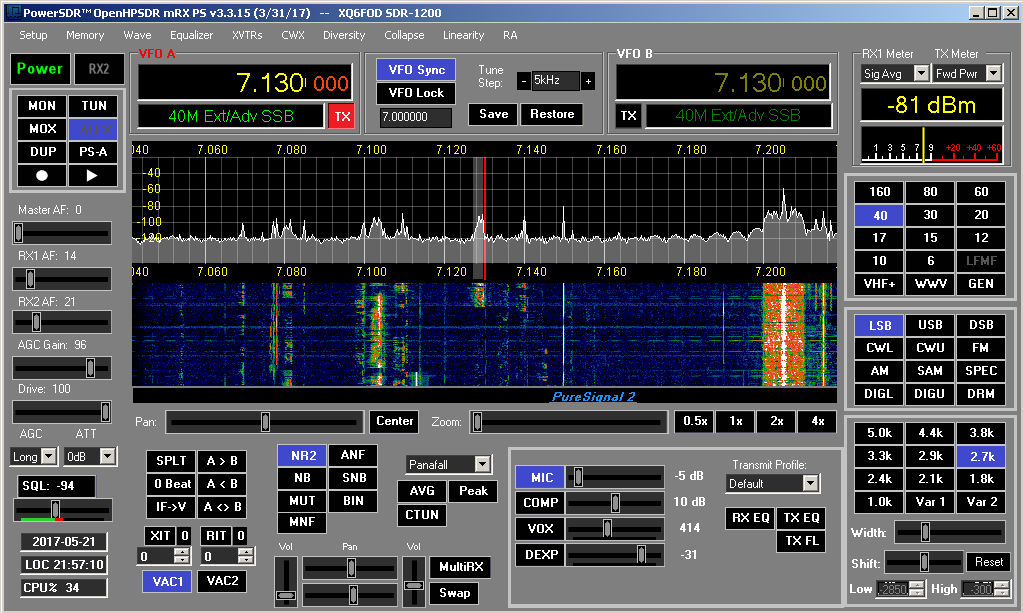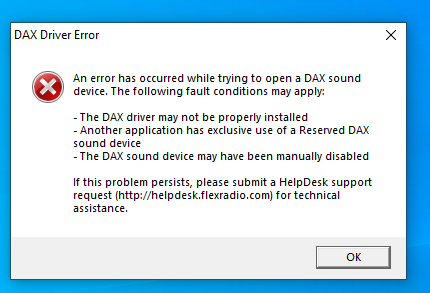“I have been a ham for more than 30 years and, in every way, my Flex is better than the other rigs in my shack.” Tim, W4TME “No other company in the industry can’t match FlexRadio’s personalized service, support, warranty and guarantee.”. WriteLog’s FlexRadio Rig Driver (1 of 4) The FlexRadio ships with the SmartSDR and SmartCAT products that enable WriteLog to control the FlexRadio as if it were an ordinary COM-port connected rig. That configuration works, but there is a lot more that WriteLog can do with the FlexRadio if you install its custom FlexRadio rig driver.
WriteLog allows its rig drivers to present to the operator what looks like two separate rigs, when there is, in fact, only one physical radio connected. This feature is not implemented on most of WriteLog’s rig drivers because it (a) requires a substantial amount of software work to construct but (b) only is useful if the rig itself is capable of simultaneous reception on two different bands at the same time. The Flex-6000’s qualify on this count. Here is how you add that capability to your WriteLog configuration. You start with WriteLog’s Setup/Ports dialog.
Slices A&B on a different Panadapter from Slices C&D
The key is that two rows in the dialog box both name the same FlexRadio (“Mayfield” in this case). Having done that you should configure SmartSDR to have two Panadapters.
WriteLog does not enforce the recommendation above that you create a second Panadapter, and that you place Slice A and B on one of them, and Slice C and D on the other. But this is a very strong recommendation. Why? There are several important reasons.
- The spectrum WriteLog draws on its Front Panel backgrounds comes from an IQ stream from a Panadapter. WriteLog can only draw spectrums out to half the IQ stream bandwidth from the center of the Panadapter. If you put Slices C and D on the same Panadapter as A and B, then all have to be within the same 192KHz bandwidth else at least some of the spectrums do not draw.
- All Slices on a Panadapter share their ANT setting, so to listen on one ANT while transmitting on the other, the Transmit Slice (with the bright red TX indicator like in the capture above) must be on a different Panadapter than the receive Slice. FlexRadio has announced software upgrades to enable full duplex (listen while transmit) operation. But that can only happen on two different antennas.
- This gets even more important if you have a Flex-6700, which has two independent receiver chains. More about that later.
Operating two Panadapters concurrently on different bands?
This recommendation to separate Slices A&B onto a different Panadapter from Slices C&D does not mean those two Panadapters should or should not be on different ham bands. For all Flex-6000 models and all antenna configurations, there is no performance degradation operating the two Panadapters on the same ham band. Successfully operating two Panadapters concurrently on different ham bands depends on
- on which Flex model you have
- whether the antennas you have connected to the Flex’s ANT connector(s) are single band or multi-band antennas
- whether you can do without the bandpass filters in the ‘6500 when multi-band receive forces it into its WIDE mode. This can be important if you are operating SO2R with another radio besides your Flex.

The final posting on use of a second radio discusses these trade-offs in more detail.

Here is what the dataflow of the integrated WriteLog/SmartSDR/FlexRadio system looks like, and how to set WriteLog’s dialogs appropriately.
Do not overlook these details:
Drivers Flexradio Others Download
- The Entry Window corresponding to Slices C and D should be set using WriteLog’s menu Radio/This-Window-Is/Radio-3. Why? Because WriteLog will move the Active indicator within SmartSDR only if its corresponding Entry Window has a designation of one of L/R/3/4. (The Active indicator is the yellow bar that control which Slice the FlexControl knob will tune when it is turned.) You really want WriteLog to move that Active indicator correctly.
- Why does it need to be 3 and not L or R? This is because I chose at this point in the discussion to add in the ability of WriteLog to route audio to a recording file, and also from the station microphone connected to the PC instead of directly to the Flex. When WriteLog controls any of its various multi-radio options that only expect two-choices: CW keyer L/R selection, the microphone routing to L/R rig, and the headphone routing for L/R rig, WriteLog treats the 3 (and 4) rigs just like R. So when you switch WriteLog’s transmit or receive focus between the R window and the 3 window, nothing changes in the CW keyer, or mic or headphone routing.
- In the picture that both the station microphone and the shack headphones are no longer connected to the Flex front panel, but are instead connected to physical Windows Recording and Playback devices, respectively. This enables WriteLog to record both all your transmitted audio as well as all received audio. Use WriteLog’s Sound board mixer control to set up which Windows devices are used, and use WriteLog’s Setup/Sound-board-options to turn on Echo Mic and Continuous Record.
- This picture shows the FlexRadio’s audio output connected to a physical Recording device. That sound makes it to the WriteLog mixer via a cable connection from the Flex (ACC jack in this picture, but the SPEAKER works as well) to a physical Recording Device on the PC. There are alternative sound routing configurations involving use of the DAX RX Audio devices in WriteLog’s Mixer, rather than requiring this additional cable between your Flex and your PC. However these features won’t work via DAX RX audio:
- none of the DAX RX audio streams from the radio include CW Sidetone.
- The radio’s Audio Pan/Gain controls only the audio via its HEADPHONES/SPEAKER/ACC and not the DAX channels.
- For digital mode operation, the number of MMTTY decoders running is expanded to four. (Not shown is that you need four RttyRite windows to go with them.) You can have one on each Slice, decoding from the four DAX RX 1 through 4 channels. Two of them must be RttyRite “clone Windows” because WriteLog will only command the first two into transmit mode.
This configuration gives a lot of versatility, but, by my own definition of the term, this is not SO2R. For Single Operator 2 Receiver operation, my definition requires being able to transmit on one antenna while simultaneously receiving on another. Read the next post to see a way to add that.
WriteLog has long supported SO2R operation with two physical rigs. If your Flex is a ‘6500 or ‘6300, then you need a second rig in order to listen on one antenna while transmitting on another.
The third rig should be configured as L, but otherwise the rest of the pictures are about the same as before. It just adds the normal WriteLog setup for the “other” rig.
The other rig in this case is connected for rig control on COMM1, and connected into WriteLog’s sound routing using physical Recording device and Playback device sound cards. WriteLog has three Entry WIndows. All three are fully functional in the sense that any can be used for entering QSO information or initiating transmissions, and on any mode. I did not expand the number of digital modems in this configuration picture, but one more MMTTY is needed, and it is connected to the sound devices for the COMM1 radio.


This picture calls out the FlexRadio 6700, which makes this really an SO3R setup. The operator can transmit on any of three antennas, and receive on three simultaneously.

Drivers Flexradio Others Help
If a FlexRadio 6500/6300 is used instead, all the configuration settings show above are still valid, but the ‘6500/’6300 will use only one of its two ANT connections at a time. Without a ‘6700, then why configure WriteLog to have the Slice C&D Entry Window? Its true that while transmitting on either of those Entry Windows, both will be muted for receive. But while not transmitting, you can listen on two different frequencies at a time, one in each ear, or to multiple digital decoders. Initiating a transmission from either Entry Window, WriteLog will switch the Flex’s Transmit flag to the appropriate Slice and its frequency. If the antenna is multi-band, then the two Entry Windows can even be on different bands, although at the cost of forcing the ‘6500 into WIDE mode, reducing its ability to reject the transmit signal from the “other” radio. (The ‘6300, lacking those filters, always operates in WIDE mode, so it doesn’t benefit from filters rejecting the “other” radio’s TX.) Regardless of radio manufacturer, SO2R stations always benefit from isolation between the different antennas used for the one allowed transmitter and those used for the multiple R’s.
Drivers Flexradio Others Jobs
This series of posting is not intended to be exhaustive of the possibilities for configuring WriteLog to work with the Flex. The new full duplex capability, for example, enables the Flex-6500 to receive through its LoopA while transmitting on ANTB. It can be used, therefore, to listen, presumably on a different band, while transmitting. Another possible configuration is SO2R with a pair of ‘6500s.
